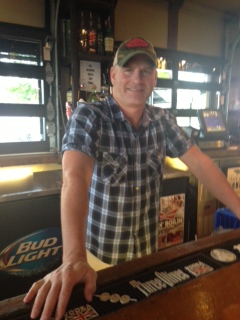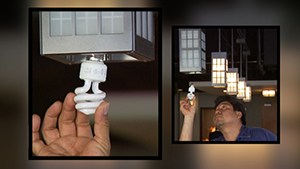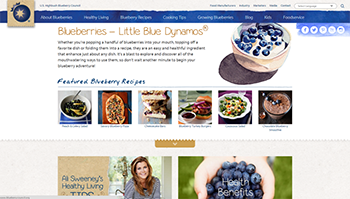A popular Louisiana-style restaurant goes from roadside stand to Cajun cuisine sensation.
 True tastes of the bayou are surfacing throughout the South, and Cajun Steamer Bar & Grill is happy to take the blame.
True tastes of the bayou are surfacing throughout the South, and Cajun Steamer Bar & Grill is happy to take the blame.
For years, co-founder Jeff Thompson has been pouring his Cajun heart and soul into the growing chain of restaurants, but he admits that it all began from his own selfish interest.
When Thompson moved to Birmingham from Louisiana in the early 1990s, his first order of business was to assess the local dining scene. That’s when he discovered a glaring void that made it virtually impossible for him to call Alabama home.
“There was no Cajun food at all, and I just can’t live without my crawfish!” Thompson says, laughing through his thick Louisiana drawl. “It was either do something about it or go home. This was a deal-killer.”
Thompson took matters into his own hands, setting up a modest roadside stand and selling crawfish from the back of a trailer hooked up to his truck. It was anything but fancy, but his winning formula of fresh seafood sold at reasonable prices proved that the market was ready for authentic Cajun cuisine.
“It was pretty simple—just a couple of tables and some umbrellas—but you wouldn’t believe how excited people here got over it,” Thompson says. “It was as if I had introduced them to a whole new culture, like they’d never had crawfish before—not the fresh kind, anyway. That little stand still brings back fond memories for me; it still brings a smile to my face when I think about all the people I met. That’s when I could start calling Birmingham home.”

 Integration of industry and education better prepares students for success and makes a school essential in the eyes of all stakeholders. Good news is that opportunities for your program to partner with your local business community are endless.
Integration of industry and education better prepares students for success and makes a school essential in the eyes of all stakeholders. Good news is that opportunities for your program to partner with your local business community are endless. New research from the National Restaurant Association shows a substantial number of operators are implementing sustainability best practices into their businesses.
New research from the National Restaurant Association shows a substantial number of operators are implementing sustainability best practices into their businesses. Twenty restaurants across the United States were recipients of 2014 Achievement of Excellence Awards from the American Culinary Federation (ACF) this summer. Three of them are on The Culinary Institute of America’s Hyde Park, N.Y. campus: American Bounty Restaurant, The Bocuse Restaurant, and Ristorante Caterina de’ Medici. In addition, nine CIA graduates were honored at the organization’s awards event held during the ACF national conference in Kansas City, Mo., in July.
Twenty restaurants across the United States were recipients of 2014 Achievement of Excellence Awards from the American Culinary Federation (ACF) this summer. Three of them are on The Culinary Institute of America’s Hyde Park, N.Y. campus: American Bounty Restaurant, The Bocuse Restaurant, and Ristorante Caterina de’ Medici. In addition, nine CIA graduates were honored at the organization’s awards event held during the ACF national conference in Kansas City, Mo., in July. Discover homegrown American lamb stories and recipes to inspire your menu. A new booklet from the American Lamb Board shares information on American lamb from shepherds to chefs across the country. The booklet also includes chef-developed recipes including chorizo-spiced lamb loin and merguez flatbread. To order your fee copy of the booklet, e-mail
Discover homegrown American lamb stories and recipes to inspire your menu. A new booklet from the American Lamb Board shares information on American lamb from shepherds to chefs across the country. The booklet also includes chef-developed recipes including chorizo-spiced lamb loin and merguez flatbread. To order your fee copy of the booklet, e-mail  The National Mango Board announces the release of a new tool to inspire menu innovation, Mango Flavor Pairing Guide. The guide was developed to create excitement about fresh mango as a versatile ingredient, the key to innovation all across menus, all year ’round. The mango pairings showcase complementary and contrasting sensory combinations from familiar to surprising.
The National Mango Board announces the release of a new tool to inspire menu innovation, Mango Flavor Pairing Guide. The guide was developed to create excitement about fresh mango as a versatile ingredient, the key to innovation all across menus, all year ’round. The mango pairings showcase complementary and contrasting sensory combinations from familiar to surprising. Consumer interests and industry needs were the driving forces behind the U.S. Highbush Blueberry Council’s (USHBC) recent website overhaul and launch. Fresh design, a streamlined format and the optimized platform for mobile and tablet viewing provide industry professionals and consumers alike with a consistent and engaging experience.
Consumer interests and industry needs were the driving forces behind the U.S. Highbush Blueberry Council’s (USHBC) recent website overhaul and launch. Fresh design, a streamlined format and the optimized platform for mobile and tablet viewing provide industry professionals and consumers alike with a consistent and engaging experience. True tastes of the bayou are surfacing throughout the South, and
True tastes of the bayou are surfacing throughout the South, and